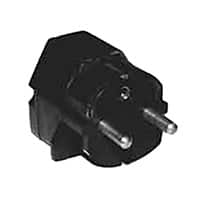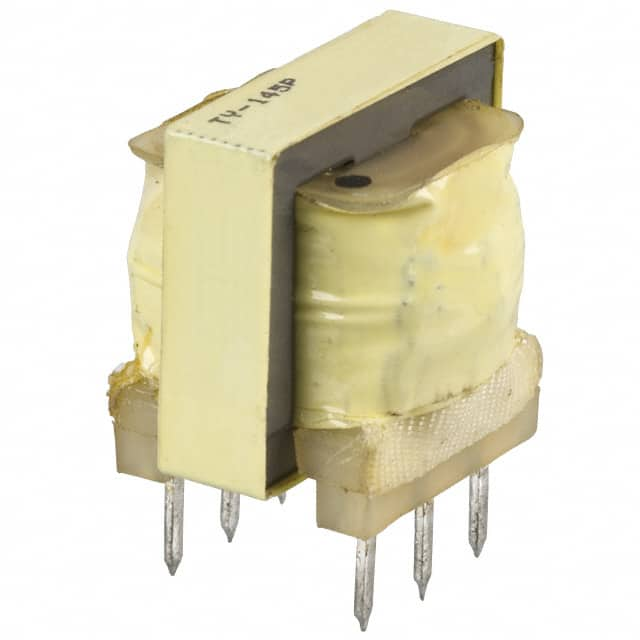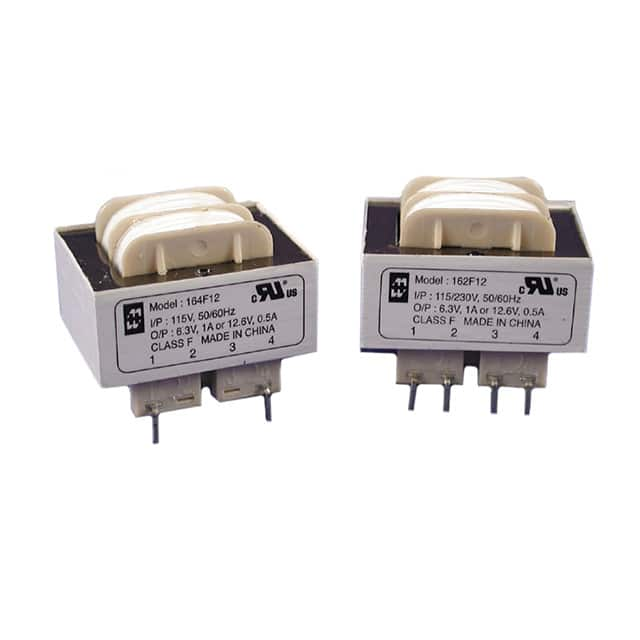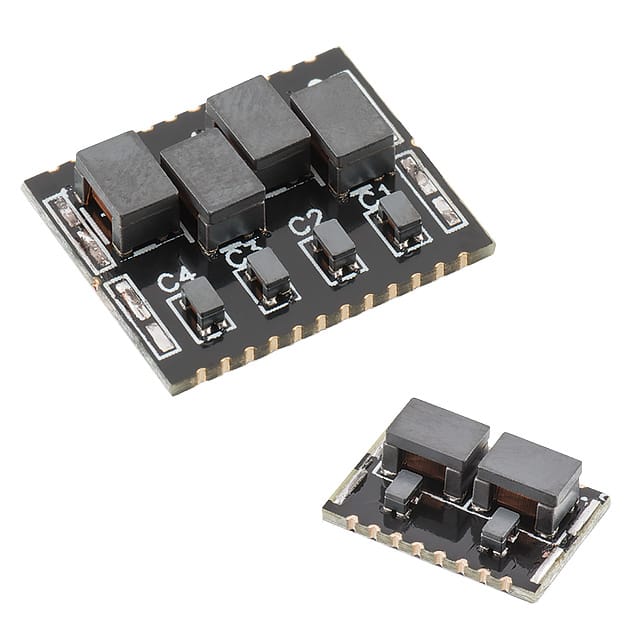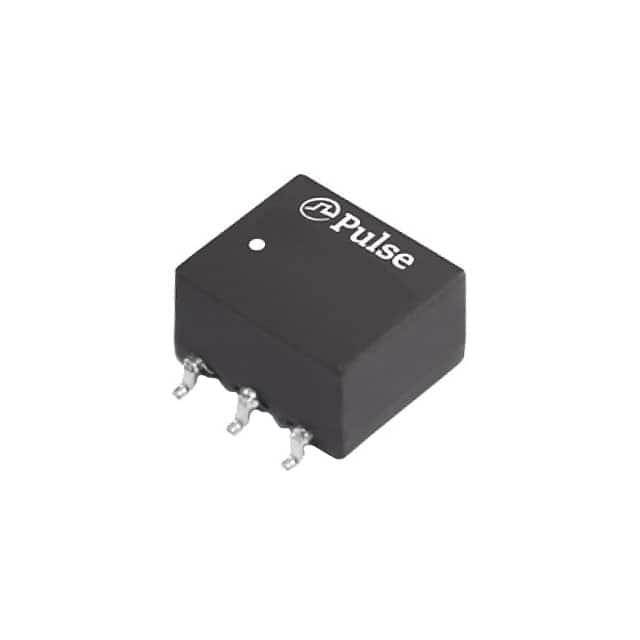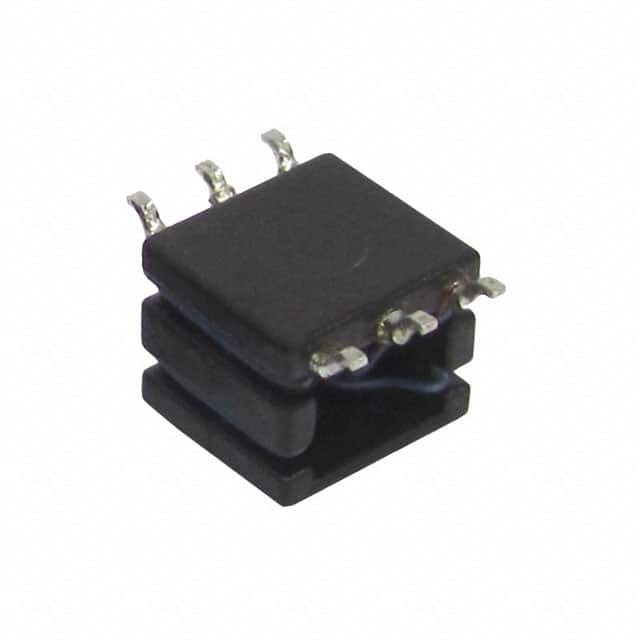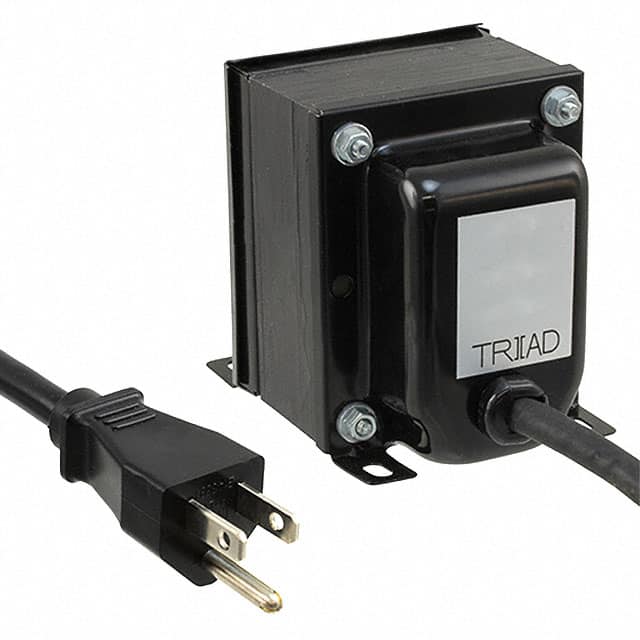
Isolation Transformers and Autotransformers, Step Up, Step Down
Transformer definition
A transformer is an electrical device used to change the voltage level of alternating current, transferring electrical energy from one AC circuit to another through the principle of electromagnetic induction.
It usually consists of two coils, namely a primary coil and a secondary coil, which transmit electrical energy through mutual inductance. Transformers are mainly used for power transmission, voltage matching, current regulation and isolation circuits. It is an important component in power systems, electronic equipment and communication systems.
What is a transformer used for?
Transformers are used to change the voltage level of alternating current. Its main function is to convert input voltage to output voltage, either increasing (step-up transformer) or decreasing (step-down transformer) voltage.
This allows electrical energy to be efficiently transmitted under different voltage conditions and adapted to the needs of different devices and circuits. Transformers are widely used in many fields such as power transmission, electronic equipment, and communication systems.
What are the basics of transformers?
A transformer consists of two electrically isolated coils and works according to Faraday's principle of mutual induction. Voltage and current create magnetic flux in the primary coil, which is induced into the secondary coil to produce an electromotive force.
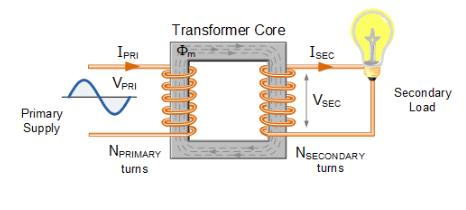
How a transformer works
The working principle of a transformer is based on Faraday's law of induction. When alternating current (AC) passes through the primary coil, the changing magnetic field generated induces the voltage in the secondary coil, thereby transferring electrical energy from one circuit to the other.
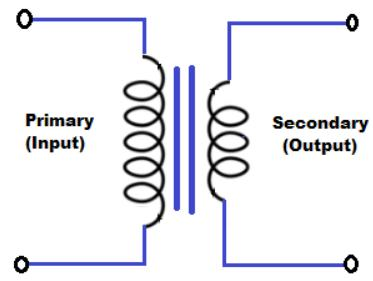
What are the main components of a basic transformer
Iron Core: The iron core is usually made of iron alloy or silicon steel sheets and is used to concentrate and guide the magnetic field to increase the efficiency of the transformer.
Primary Coil: The primary coil is the coil connected to the power source and when current is passed through it, a changing magnetic field is produced.
Secondary Coil: The secondary coil is connected to the load and produces an output voltage upon induction of a magnetic field.
Insulating material: Insulating material is used to insulate the coil and core to avoid current leakage and ensure safe operation.
External Insulated Packaging: Transformers are often packaged in an insulated enclosure to provide additional safety and insulation.
Why transformer components are important
Power transmission: Power can be transferred between different voltage levels, which is critical to power systems. When electrical energy passes through transmission lines, the voltage needs to be raised to reduce energy loss, and the voltage needs to be lowered before reaching the end user to provide a safe power supply.
Voltage matching: Mainly used to match the voltage between the power supply and the load. They can change high voltage to low voltage for use in homes or industrial equipment, or they can step up low voltage to suit high-voltage transmission lines.
Current adjustment: meet the needs of different loads. This is important for industrial processes and power distribution.
Circuit Isolation: Provides electrical isolation that can isolate different parts of the circuit, prevent current leakage and provide safer operation.
Improved efficiency: By controlling voltage and current, transformers can improve the efficiency of power transmission and reduce energy loss, thereby saving energy and reducing costs.
What are the types of transformers based on voltage levels?
Step-up Transformer: It mainly increases the AC voltage and reduces the current. The wires in the primary coil are thicker than those in the secondary coil.
Step-down transformer It can reduce the AC voltage and increase the current.The wires in the secondary coil are thicker than the wires in the primary coil
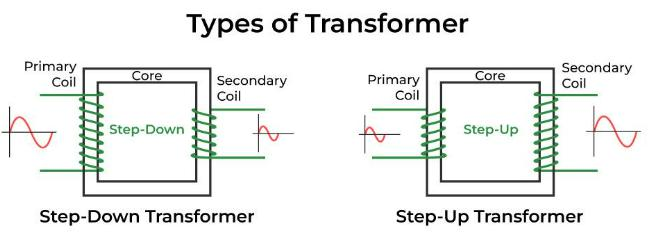
The difference between step-up and step-down transformers
A step-up transformer increases the input voltage and decreases the current, while a step-down transformer decreases the input voltage and increases the current.
Core Material Transformer Type
Iron core transformer
The iron core transformer uses multiple soft iron plates as the iron core material, and uses the excellent magnetic properties of iron to achieve efficient power conversion.
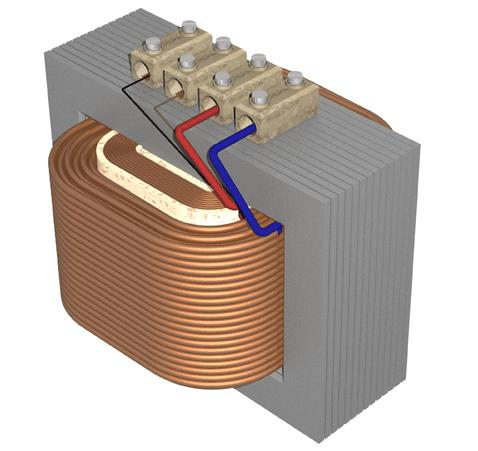
ferrite core transformer
Ferrite core transformers use ferrite core material, which has extremely high magnetic permeability. This type of transformer has very low losses in high-frequency applications, so it is often used in high-frequency scenarios such as switch-mode power supplies (SMPS) and radio frequency-related applications.
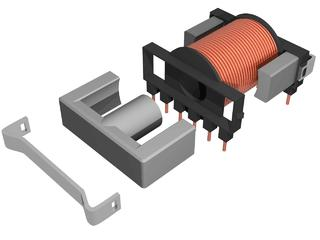
Toroidal core transformer
Toroidal core transformers use toroidal core materials such as iron cores or ferrite cores. This design has excellent electrical performance because the toroidal shape results in very low leakage inductance, high inductance and Q-factor. The relatively short windings make this transformer lighter than a conventional transformer of the same rating.
Air core transformer
Air core transformers do not use any physical core material, and their flux linkage mainly uses the surrounding air.
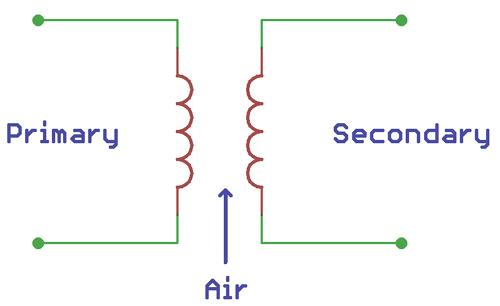
Three main components of a transformer
The three main components of a transformer include the primary coil, the secondary coil, and the core material.
The primary coil is connected to the power supply and produces a changing magnetic field. The secondary coil is connected to the load and a voltage is induced. The core material is located between the two coils and serves to concentrate the magnetic field and increase mutual inductance. These three components work together to enable the transformer to step up or step down voltage.
Transformer type based on usage
Power domain:
power transformer
A power transformer is an electrical device used to transfer electrical energy from one circuit to another without changing the frequency of the current. They utilize the principle of electromagnetic induction and are commonly used in power systems to transmit power between generators and distribution main circuits.
Measuring transformer
Used to proportionally convert voltage or current intensity to adapt to measuring instruments (such as meters, network analyzers, voltmeters, relays, etc.) to ensure that they can accurately measure the voltage or current in the circuit.
Distribution transformer
A distribution transformer is the type of transformer used to perform the final voltage conversion in the distribution network, reducing the voltage used in the transmission lines to a level suitable for domestic and commercial use, usually as low as 240 volts.
Electronic field:
pulse transformer
Pulse transformers are designed to transmit pulse signals with fast rise times, maintain the signal at a constant level, and ultimately transmit it to the other side of the circuit.
audio output transformer
An audio transformer is an electromagnetic device used to isolate input and output circuits and provide filtering for audio signals passing through it. This transformer is designed to handle signals in the audible frequency range.
Why do substations need step-down transformers?
Home and Business Electricity: When electricity is transported from a power station to a substation, it is usually at a high voltage to reduce energy losses on the transmission lines. However, this high voltage is too high for domestic and commercial use, so it needs to be reduced to safer levels to supply various appliances and equipment. Step-down transformers are used for this purpose.
Safety and compatibility: Reducing the voltage to the level of household and commercial electricity standards can reduce the risk of overloading electrical equipment and wires and cables, and improve the safety and compatibility of the power system.
Voltage Regulation: Step-down transformers are also used for voltage regulation in power systems to ensure that stable voltage levels are maintained under varying load conditions. This is critical to maintaining grid stability.
Distribution Transformation: Step-down transformers in substations are often used to distribute power to different areas or loads to meet the needs of different places. This helps to better manage power distribution.

 My Cart
My Cart
